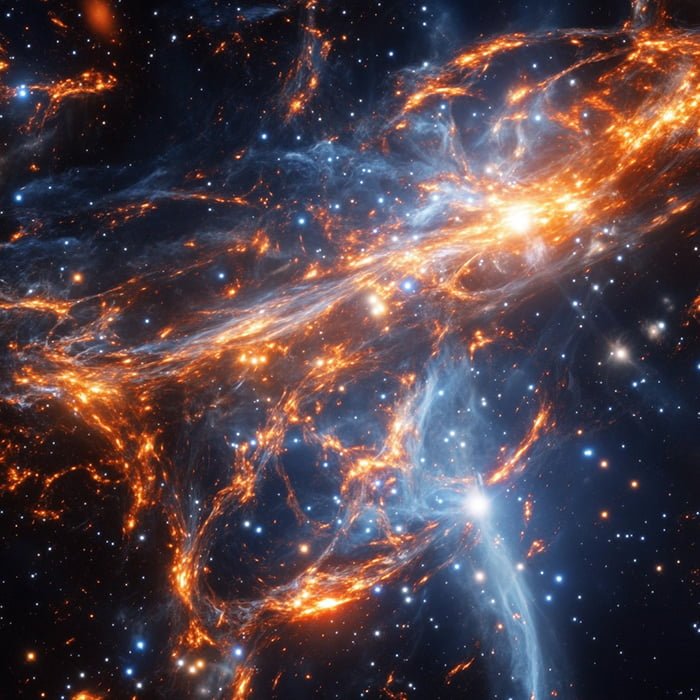Explore rare celestial phenomena: hypervelocity stars, runaway black holes, rogue planets, and scarce elements like protactinium and francium.
Key Takeaways 📝
- Hypervelocity Stars: The discovery of hypervelocity stars, such as CWISE J1249, reveals the extreme dynamics of stellar movements, challenging existing theories about stellar behavior and formation.
- Runaway Black Holes: A newly discovered runaway black hole traveling at 4,500 times the speed of sound raises questions about the processes that can eject these massive objects from galaxies.
- Rogue Planets: The James Webb Space Telescope has identified over 500 rogue planets, indicating a dynamic nature of planetary systems and their potential for hosting life.
- Rarity of Elements: Elements like protactinium and francium are incredibly scarce on Earth, with implications for nuclear science and potential applications in medicine.
- Insights from Rare Phenomena: The observation of rare events, like the decay of Xenon-124, enhances our understanding of atomic stability and the fundamental forces in the universe.
The universe is a vast expanse filled with countless phenomena, many of which are incredibly rare. This report delves into some of the rarest events, elements, and phenomena observed in the universe, synthesizing information from various sources to provide a comprehensive overview. As we explore these rare occurrences, we gain insights into the fundamental workings of the cosmos and the extraordinary processes that govern it.
Searching for Recent Discoveries of Rare Celestial Objects

Hypervelocity Stars
Hypervelocity stars are among the most fascinating and rare celestial objects in the universe. These stars travel at such high velocities that they can escape the gravitational pull of the Milky Way and venture into intergalactic space. One notable example is CWISE J1249, a hypervelocity star discovered by NASA citizen scientists. This star, with the mass of a small star, travels at an astonishing speed of about 1 million miles per hour. The discovery of such stars challenges our understanding of stellar dynamics and the forces that can propel stars to such incredible speeds.
Runaway Black Holes
In 2023, astronomers made a groundbreaking discovery of a ‘runaway’ black hole. This black hole, untethered from any galaxy, is blazing through space at 4,500 times the speed of sound, leaving an enormous trail of stars in its wake. This unprecedented discovery adds to the list of rare cosmic phenomena and raises intriguing questions about the mechanisms that can eject black holes from their host galaxies. The study of runaway black holes could provide valuable insights into the dynamics of galaxy mergers and the gravitational interactions that can lead to such extraordinary events.
Rogue Planets
The James Webb Space Telescope (JWST) has revolutionized our understanding of the universe by detecting more than 500 free-floating ‘rogue’ planets in the Orion Nebula. These planets, not bound to any star, are rare and intriguing objects that challenge our understanding of planetary formation and dynamics. The existence of rogue planets suggests that planetary systems can be highly dynamic, with planets being ejected from their parent systems due to gravitational interactions. The study of rogue planets could shed light on the processes that govern planetary formation and the potential for life in the universe.
Searching for Scientific Studies on the Rarest Elements in the Universe

Protactinium and Francium
Protactinium (Pa) and Francium (Fr) are among the rarest elements found on Earth. Protactinium is present in the Earth’s crust in minuscule quantities, while Francium is an incredibly rare and highly reactive alkali metal. The rarity of these elements is due to their short half-lives and the fact that they are not produced in significant quantities in natural processes. Scientific studies on these elements focus on their chemical properties and potential applications in various fields, including nuclear science and medicine.
Astatine
Astatine (At) is another extremely scarce element, with concentrations ranging from 0.05 to 0.5 parts per trillion by weight. Its rarity is compounded by its high reactivity and short half-life. Astatine is primarily produced in nuclear reactors and has potential applications in nuclear medicine, particularly in targeted alpha therapy for cancer treatment. The study of astatine and its compounds is challenging due to its scarcity and the need for specialized facilities to handle its radioactive nature.
Promethium
Promethium (Pm) is considered the rarest element in the universe. Its scarcity is due to its instability and the fact that it is not found naturally in significant quantities. Promethium is primarily produced in nuclear reactors and has limited applications, including in luminous paints and as a beta radiation source in scientific instruments. The study of promethium and its isotopes provides valuable insights into the processes of nuclear decay and the synthesis of heavy elements in stars.
Tellurium
Tellurium, a brittle semiconducting element, is very rare on Earth but has been detected in ancient stars nearly 12 billion years old. This finding supports the theory that tellurium and other heavy elements originated from a rare type of supernova during a rapid process of nuclear fusion. The study of tellurium and its isotopes provides insights into the nucleosynthesis processes that occur in stars and the chemical evolution of the universe.
Searching for Theoretical Physics on the Rarest Phenomena in the Universe

Decay of Xenon-124
One of the rarest events observed in the universe is the decay of a Xenon-124 atom. This process, known as double electron capture, was recorded by researchers at Italy’s Laboratori Nazionali del Gran Sasso (LNGS). Xenon-124 has an extraordinarily long half-life of 1.8 x 10^22 years, making its decay an exceptionally rare occurrence. Over two years, researchers have documented this decay process 126 times, highlighting its rarity. The study of such rare decay processes provides valuable insights into the fundamental forces that govern atomic nuclei and the stability of matter.
Quantum Anomalous Hall Effect
Another rare phenomenon is the quantum anomalous Hall effect, observed in bilayer graphene. This effect, which involves the coexistence and cooperation of ferromagnetism, ferroelectricity, and the zero-field quantum Hall effect, was documented for the first time in a simple material. The discovery of eight different ground states in bilayer graphene exhibiting this effect underscores its rarity. The study of the quantum anomalous Hall effect provides insights into the behavior of electrons in low-dimensional systems and the potential for novel electronic devices.
Theoretical Physics and Rare Phenomena
Theoretical physics plays a crucial role in understanding the rarest phenomena in the universe. From the behavior of subatomic particles to the dynamics of black holes and the formation of cosmic structures, theoretical models provide a framework for interpreting observations and predicting new phenomena. The study of rare events and phenomena challenges our understanding of the fundamental laws of physics and drives the development of new theories and models.
what is the rarest thing in the universe?
The universe is home to numerous rare events, elements, and phenomena that continue to intrigue and challenge scientists. From the decay of Xenon-124 atoms to the discovery of hypervelocity stars and rogue planets, these rare occurrences provide valuable insights into the workings of the cosmos. As technology advances, we can expect to uncover even more of these extraordinary phenomena, further expanding our understanding of the universe. The study of the rarest things in the universe not only deepens our knowledge of the cosmos but also inspires new questions and avenues of research, driving the pursuit of scientific discovery and exploration.
























